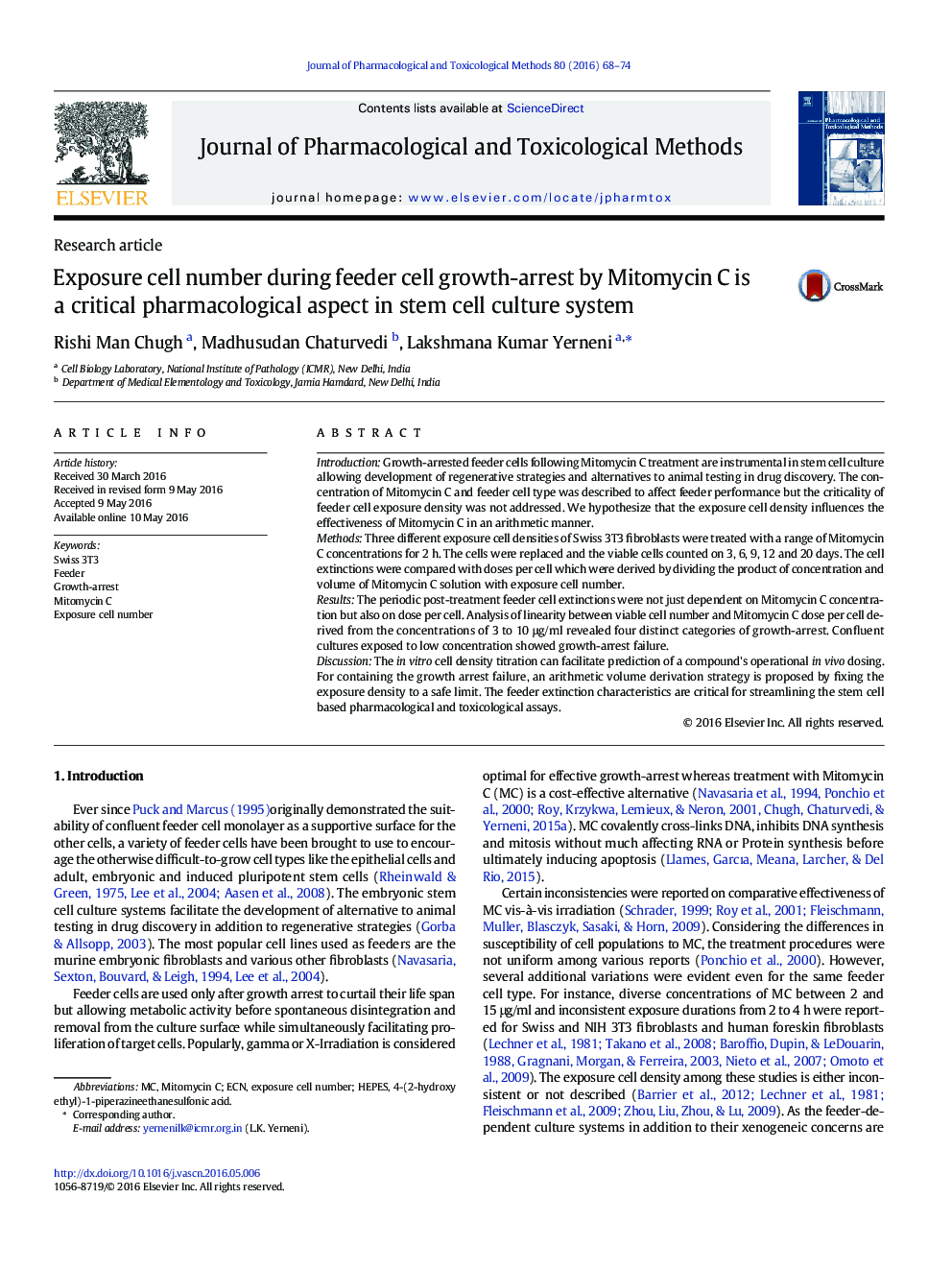| Article ID | Journal | Published Year | Pages | File Type |
|---|---|---|---|---|
| 5840428 | Journal of Pharmacological and Toxicological Methods | 2016 | 7 Pages |
IntroductionGrowth-arrested feeder cells following Mitomycin C treatment are instrumental in stem cell culture allowing development of regenerative strategies and alternatives to animal testing in drug discovery. The concentration of Mitomycin C and feeder cell type was described to affect feeder performance but the criticality of feeder cell exposure density was not addressed. We hypothesize that the exposure cell density influences the effectiveness of Mitomycin C in an arithmetic manner.MethodsThree different exposure cell densities of Swiss 3T3 fibroblasts were treated with a range of Mitomycin C concentrations for 2 h. The cells were replaced and the viable cells counted on 3, 6, 9, 12 and 20 days. The cell extinctions were compared with doses per cell which were derived by dividing the product of concentration and volume of Mitomycin C solution with exposure cell number.ResultsThe periodic post-treatment feeder cell extinctions were not just dependent on Mitomycin C concentration but also on dose per cell. Analysis of linearity between viable cell number and Mitomycin C dose per cell derived from the concentrations of 3 to 10 μg/ml revealed four distinct categories of growth-arrest. Confluent cultures exposed to low concentration showed growth-arrest failure.DiscussionThe in vitro cell density titration can facilitate prediction of a compound's operational in vivo dosing. For containing the growth arrest failure, an arithmetic volume derivation strategy is proposed by fixing the exposure density to a safe limit. The feeder extinction characteristics are critical for streamlining the stem cell based pharmacological and toxicological assays.
